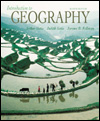Web Page Questions: Answer the following questions using the web pages listed in the chapter. 1. National Council for Science and the Environment - http://www.noaa.gov/
Select "The Weather" and then select "National Warnings."
Peruse this site. a. How many different national warnings did you see? Why is this site constantly being updated? __________________________________________________________________________________________ __________________________________________________________________________________________ __________________________________________________________________________________________ __________________________________________________________________________________________ b. Given the definition of weather, make a general statement about all web pages for weather. __________________________________________________________________________________________ __________________________________________________________________________________________ __________________________________________________________________________________________ __________________________________________________________________________________________  <a onClick="window.open('/olcweb/cgi/pluginpop.cgi?it=jpg::Weather Stats::/sites/dl/free/0072367229/9464/Image04_01.jpg','popWin', 'width=700,height=306,resizable,scrollbars');" href="#"><img valign="absmiddle" height="16" width="16" border="0" src="/olcweb/styles/shared/linkicons/image.gif">Weather Stats (30.0K)</a>Weather Stats <a onClick="window.open('/olcweb/cgi/pluginpop.cgi?it=jpg::Weather Stats::/sites/dl/free/0072367229/9464/Image04_01.jpg','popWin', 'width=700,height=306,resizable,scrollbars');" href="#"><img valign="absmiddle" height="16" width="16" border="0" src="/olcweb/styles/shared/linkicons/image.gif">Weather Stats (30.0K)</a>Weather Stats <a onClick="window.open('/olcweb/cgi/pluginpop.cgi?it=jpg::Climagraphs::/sites/dl/free/0072367229/9464/Image04_02.jpg','popWin', 'width=594,height=876,resizable,scrollbars');" href="#"><img valign="absmiddle" height="16" width="16" border="0" src="/olcweb/styles/shared/linkicons/image.gif">Climagraphs (87.0K)</a>Climagraphs <a onClick="window.open('/olcweb/cgi/pluginpop.cgi?it=jpg::Climagraphs::/sites/dl/free/0072367229/9464/Image04_02.jpg','popWin', 'width=594,height=876,resizable,scrollbars');" href="#"><img valign="absmiddle" height="16" width="16" border="0" src="/olcweb/styles/shared/linkicons/image.gif">Climagraphs (87.0K)</a>Climagraphs2. On the following diagram show the effect of the Coriolis Force on the deflection of winds in the northern and southern hemispheres. Note: there is no deflection at the Equator.  <a onClick="window.open('/olcweb/cgi/pluginpop.cgi?it=jpg::Diagram 1::/sites/dl/free/0072367229/9464/Image04_03.jpg','popWin', 'width=431,height=431,resizable,scrollbars');" href="#"><img valign="absmiddle" height="16" width="16" border="0" src="/olcweb/styles/shared/linkicons/image.gif">Diagram 1 (16.0K)</a>Diagram 1
3. On the following diagram indicate, for both hemispheres: <a onClick="window.open('/olcweb/cgi/pluginpop.cgi?it=jpg::Diagram 1::/sites/dl/free/0072367229/9464/Image04_03.jpg','popWin', 'width=431,height=431,resizable,scrollbars');" href="#"><img valign="absmiddle" height="16" width="16" border="0" src="/olcweb/styles/shared/linkicons/image.gif">Diagram 1 (16.0K)</a>Diagram 1
3. On the following diagram indicate, for both hemispheres:
a. the following areas of high and low pressure with their respective titles:
- Equatorial Trough
- Subtropical High Pressure Belts
- Subpolar Low Pressure Belts
- Polar Highs
b. the following wind belts with their respective titles and directions:
- Northeast Trades
- Southeast Trades
- Westerlies
- Polar Easterlies
 <a onClick="window.open('/olcweb/cgi/pluginpop.cgi?it=jpg::Diagram 2::/sites/dl/free/0072367229/9464/Image04_04.jpg','popWin', 'width=431,height=431,resizable,scrollbars');" href="#"><img valign="absmiddle" height="16" width="16" border="0" src="/olcweb/styles/shared/linkicons/image.gif">Diagram 2 (13.0K)</a>Diagram 2 <a onClick="window.open('/olcweb/cgi/pluginpop.cgi?it=jpg::Diagram 2::/sites/dl/free/0072367229/9464/Image04_04.jpg','popWin', 'width=431,height=431,resizable,scrollbars');" href="#"><img valign="absmiddle" height="16" width="16" border="0" src="/olcweb/styles/shared/linkicons/image.gif">Diagram 2 (13.0K)</a>Diagram 24. Complete the following table concerning soil horizons.(NOTE: italics get printed on the chart, the rest are to be printed in the answer section.) | | O | A | E | B | C | R | | Situation in Profile | | near the surface | | | | | | Color Intensity | | | | | | | | Presence of Organic Matter | greatest amount | | | | | | | Presence of Minerals | | | little amounts | | | | | Zone of ___? | | | | accumulation | | | | Representative Particle Size | | smallest | | | | |
5. From your daily newspaper or local TV station or Internet source, cut out or make note of or print out the five-day extended weather forecast for a 14-consecutive day period. On the chart below, circle the days in vertical columns where the forecast and the actual occurrence closely match. Cross out the days where they do not match. Make a statement about the accuracy of long-range weather forecasts. For example, if the first 5-day forecast calls for rain on Thursday and sunshine on Friday, compare that to the second 5-day forecast to see if the same prediction is made for those two days. When Thursday and Friday come about, note if all or any of the predictions matched the actual weather experienced on those days. (Answers will vary with the weather forecasts.)  <a onClick="window.open('/olcweb/cgi/pluginpop.cgi?it=jpg::Forecast Chart::/sites/dl/free/0072367229/9464/Image04_05.jpg','popWin', 'width=560,height=276,resizable,scrollbars');" href="#"><img valign="absmiddle" height="16" width="16" border="0" src="/olcweb/styles/shared/linkicons/image.gif">Forecast Chart (31.0K)</a>Forecast Chart <a onClick="window.open('/olcweb/cgi/pluginpop.cgi?it=jpg::Forecast Chart::/sites/dl/free/0072367229/9464/Image04_05.jpg','popWin', 'width=560,height=276,resizable,scrollbars');" href="#"><img valign="absmiddle" height="16" width="16" border="0" src="/olcweb/styles/shared/linkicons/image.gif">Forecast Chart (31.0K)</a>Forecast ChartCritical Thinking Questions - A conservationist group interested biogeography has asked for your support to purchase a tract of forest habitat in the northern hemisphere containing a unique species of tree that is being encroached by several tree species normally found to the south of this location. See diagram. Discuss why you would or would not support the purchase of land to create a forest preserve. For argument's sake, you decided to help purchase land in this area. Which tract of land - Tract A, Tract B or Tract C - would you agree to purchase and why?
- Make believe you lived thousands of years ago on the island off the Atlantic coast of present day Canada when this area had a subtropical climate similar to that of present-day Florida. On your 5th birthday, the Arctic Ocean began to break through a land barrier had contained it and started to flow into the Atlantic Ocean. Now on your 105th birthday you recollect on the changes in climate. How did the climate change over that 100-year period? Why?
- List and explain in detail the influences on climate formation. Relate each influence to a specific climate explaining how that influence is exemplified.
- Discuss the interrelationship between climate, soil formation and natural vegetation. Explain why world maps of these phenomena are strikingly similar.
- Discuss how vegetation plays an important role in maintaining a favorable state of the atmosphere locally, regionally, and globally.
|



 2002 McGraw-Hill Higher Education
2002 McGraw-Hill Higher Education



